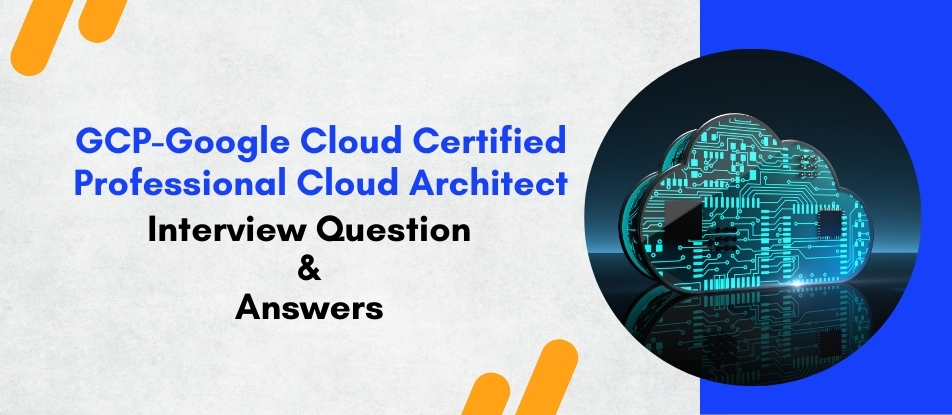
The Google Cloud Certified Professional Cloud Architect course offers in-depth training on designing and managing scalable and secure cloud solutions. Participants will learn to evaluate cloud application requirements, ensure disaster recovery strategies, manage enterprise solutions, and understand compliance and security. This comprehensive program is designed to build expertise in Google Cloud technologies, preparing learners to excel as cloud architects and successfully pass the certification exam.
GCP-Google Cloud Certified Professional Cloud Architect Interview Questions Answers- For Intermediate
1. What is Google Cloud Anthos, and what are its main benefits?
Google Cloud Anthos is a modern application management platform that enables you to modernize, build, and manage applications across environments—whether cloud-native or based on traditional VMs. Its main benefits include agility, security, and increased operational efficiency across hybrid and multi-cloud environments.
2. How does Google Cloud handle encryption at rest?
Google Cloud automatically encrypts data at rest, without any action required from the user, using one or more encryption mechanisms. The data is encrypted with either managed keys or customer-supplied keys through the Cloud Key Management Service (KMS).
3. Can you explain the difference between Cloud SQL and Cloud Spanner?
Cloud SQL is a fully-managed relational database service that offers MySQL, PostgreSQL, and SQL Server instances. It is ideal for traditional database applications. Cloud Spanner, on the other hand, is a scalable, multi-region database service designed for horizontal scaling and global application consistency.
4. What is the purpose of Google Cloud's Dataflow service?
Google Cloud Dataflow is a fully-managed service for stream and batch data processing. It is used for event-driven computing and analytics, providing a simplified pipeline development environment that integrates seamlessly with other Google Cloud data services.
5. Describe the functionalities provided by Google Cloud’s Identity-Aware Proxy (IAP).
Identity-Aware Proxy (IAP) controls access to cloud applications running on Google Cloud based on identity and context, such as the user's location and device security status. It helps secure applications and VMs without using a traditional VPN.
6. What is Google Cloud Armor and what security features does it provide?
Google Cloud Armor is a web application firewall (WAF) that provides protection against multiple types of attacks including DDoS, SQL injection, and cross-site scripting (XSS). It integrates with Google Cloud CDN for optimized application and site performance.
7. Explain the concept of preemptible VMs in Google Cloud.
Preemptible VMs are short-lived compute instances in Google Cloud available at a reduced price compared to standard instances. They can be terminated at any time if Google Cloud requires access to those resources, making them suitable for fault-tolerant workloads.
8. How does the Google Cloud Resource Manager assist with project organization?
Google Cloud Resource Manager is a service that allows you to centrally manage and monitor all of your resources across projects and services. It helps in organizing resources hierarchically and managing access control efficiently.
9. What are the key features of Google Cloud's Networking services?
Key features include Virtual Private Cloud (VPC), Cloud Load Balancing, Cloud CDN, and Cloud Interconnect. These services provide a robust and scalable network infrastructure to support application deployment and global content delivery.
10. How do you implement auto-scaling in Google Kubernetes Engine (GKE)?
Auto-scaling in GKE is implemented by setting up a Horizontal Pod Autoscaler that automatically adjusts the number of pod replicas based on the observed CPU utilization or other selected metrics.
11. What is the role of Cloud IAM policies at the organization level?
Cloud IAM policies at the organization level allow administrators to control who can access what resources across the entire organization. These policies help enforce broad security measures and ensure compliance across all assets.
12. Can you describe how Cloud Endpoints are used in API management?
Cloud Endpoints are used to develop, deploy, protect, and monitor APIs in Google Cloud. They provide features such as authentication, API keys, logging, and monitoring, helping developers secure and manage their APIs efficiently.
13. What are the considerations for choosing between different storage options in Google Cloud?
Key considerations include data access frequency, latency requirements, data structure, and cost. Google Cloud offers various storage options like Google Cloud Storage for blobs, Persistent Disks for VMs, and specialized services like Bigtable and Firestore for specific use cases.
14. How does Google Cloud support mobile application development?
Google Cloud supports mobile development through Firebase, a unified app platform that provides services like analytics, databases, messaging, and crash reporting designed to scale and improve app quality.
15. Describe how Network Telemetry tools are used in Google Cloud.
Network Telemetry tools in Google Cloud provide detailed and real-time insights into network performance, security, and operations. They help in diagnosing network issues, ensuring network security, and optimizing network performance by providing data-driven insights.
GCP-Google Cloud Certified Professional Cloud Architect Interview Questions Answers- For Advanced
1. How do you design for fault tolerance and high availability in Google Cloud?
Designing for fault tolerance and high availability involves deploying applications across multiple zones and regions to mitigate the impact of zone or regional outages. Use Google Cloud services like Regional Persistent Disks and multi-regional storage options to ensure data availability. Employing Google Cloud Spanner for globally distributed databases can ensure consistent, high-performance data access across regions. Implementing redundancy through load balancing and automatic failover strategies is also crucial.
2. Describe the process and tools you would use for data migration from an on-premises data center to Google Cloud.
The data migration process involves assessing the current data architecture, selecting the appropriate Google Cloud storage services (like BigQuery, Cloud Storage, or Firestore), and choosing the right data transfer method (Data Transfer Service, Transfer Appliance, or Cloud Interconnect). Tools like the Transfer Service for on-premises data facilitate large-scale migrations, while Cloud Dataflow can be used for transforming data streams during the migration.
3. What strategies would you employ to ensure data security and regulatory compliance in Google Cloud?
Ensuring data security and compliance involves implementing strict access controls using Cloud IAM, encrypting data at rest and in transit, and employing Google Cloud’s compliance and security scanning tools like Security Command Center and Compliance Reports Manager. Regular audits, both internal and external, along with adherence to regulatory frameworks (such as GDPR, HIPAA), are essential. Use of VPC Service Controls to isolate sensitive data and employing data loss prevention strategies are also crucial.
4. Explain how to optimize network performance for global applications using Google Cloud.
Optimizing network performance involves using Google’s global and regional load balancers to distribute traffic optimally. Employ Cloud CDN to cache content closer to users, reducing latency and offloading origins. Configuring Cloud Interconnect and choosing premium networking options can provide lower latency and higher throughput. Network Intelligence Center offers tools to monitor and visualize network performance, helping in proactive optimization.
5. How would you handle versioning and rollback for cloud-native applications in Google Cloud?
Handling versioning and rollback requires an immutable infrastructure approach where new versions are deployed as separate instances rather than replacing the old ones. Use Google Kubernetes Engine to manage different versions through multiple deployment objects or sets. Cloud Source Repositories can be integrated with Spinnaker or Jenkins for CI/CD to automate builds, tests, and deployments, with options to rollback to previous stable versions instantly.
6. Discuss the use of machine learning to enhance security in Google Cloud.
Machine learning enhances security by detecting unusual patterns and potential threats in real time. Google Cloud’s Security Command Center uses ML to identify misconfigurations and vulnerabilities, while services like Cloud Anomaly Detection can alert to unusual API activities. ML models can be trained with historical data to identify potential breaches or leaks, integrating with DLP API to further secure sensitive information.
7. What considerations are important when architecting a scalable e-commerce platform on Google Cloud?
Architecting a scalable e-commerce platform requires ensuring the application can handle varying loads with auto-scaling services like Compute Engine Autoscaler and GKE. Implement a microservices architecture to isolate and scale different components independently. Use Cloud SQL or Firestore for transactional data, and integrate with external payment gateways securely. Employ Cloud Tasks and Pub/Sub for asynchronous processing of tasks like order processing or inventory updates.
8. How can Google Cloud's AI and machine learning services be integrated into existing enterprise workflows?
Integrating AI and ML into enterprise workflows can be achieved by identifying areas where these technologies can automate tasks or enhance decision-making, such as customer service (with AI-driven chatbots) or sales (with ML-based predictive analytics). Use AI Platform for building and deploying custom models or AutoML for leveraging pre-trained models. Integrate these models into existing applications via APIs and ensure that the data pipelines feeding into these models are robust and secure.
9. Explain the role of GCP's Operations Suite in maintaining operational efficiency.
GCP’s Operations Suite, formerly Stackdriver, provides tools to monitor, troubleshoot, and improve cloud infrastructure and applications. It includes logging, monitoring, trace, and error reporting capabilities that help maintain high availability and performance. Custom metrics and dashboards can be configured to monitor key performance indicators, and alerts can be set up to respond to incidents in real-time.
10. What are the best practices for implementing a secure CI/CD pipeline in Google Cloud?
Implementing a secure CI/CD pipeline involves using Cloud Build for automating the build, test, and deployment processes while ensuring all artifacts are stored in Container Registry with vulnerability scanning enabled. Use IAM roles to control access to the CI/CD pipeline and encrypt all data using KMS. Implement automated security tests as part of the pipeline and use VPC Service Controls to isolate resources.
11. How do you utilize Google Cloud’s Bigtable for large-scale data processing?
Google Cloud Bigtable is ideal for large-scale data processing tasks that require high throughput and low latency. It is used for real-time analytics and event-driven applications. When integrating Bigtable, ensure that your data model is optimized for the way Bigtable handles data distribution and scanning. Use Bigtable’s integration with other Google services like Dataflow for stream processing and AI Platform for predictive analytics.
12. Discuss the implementation of federated analytics in Google Cloud.
Federated analytics in Google Cloud can be implemented by leveraging BigQuery’s ability to perform federated queries across various data sources, such as Cloud SQL, Sheets, and Drive. This allows for comprehensive analytics across data silos without moving the data into a single repository. Data governance and security must be managed to ensure compliance and protect data integrity.
13. What are the challenges of managing stateful applications in Kubernetes on Google Cloud and how can they be addressed?
Managing stateful applications in Kubernetes involves dealing with persistent storage and state management across pod restarts and scaling. Use StatefulSets for deploying stateful applications as they manage the deployment and scaling of a set of Pods, and guarantee the order and uniqueness of these Pods. Combine this with persistent volume claims to ensure data persists across restarts, and configure backup solutions to protect against data loss.
14. How can real-time data streaming be optimized in Google Cloud?
Optimizing real-time data streaming can be achieved using Cloud Pub/Sub for ingesting and delivering real-time messages, combined with Dataflow for processing streams. Ensure that message processing is idempotent and can handle possible duplication. Use extensive monitoring and scaling policies to manage load & latency. Employ stream analytics from AI Platform for insights & predictions.
15. What are the implications of using multi-tenancy in Google Cloud, and how can it be securely implemented?
Multi-tenancy in Google Cloud allows multiple users or services to share cloud resources efficiently but raises concerns around data security and isolation. Implement it securely by using Namespaces in Kubernetes for resource isolation, IAM for fine-grained access control, and encrypted multi-tenant databases to ensure data privacy. Regular audits and compliance checks should be enforced to maintain security standards.
Course Schedule
| Apr, 2025 | Weekdays | Mon-Fri | Enquire Now |
| Weekend | Sat-Sun | Enquire Now | |
| May, 2025 | Weekdays | Mon-Fri | Enquire Now |
| Weekend | Sat-Sun | Enquire Now |
Related Courses
Related Articles
Related Interview
Related FAQ's
- Instructor-led Live Online Interactive Training
- Project Based Customized Learning
- Fast Track Training Program
- Self-paced learning
- In one-on-one training, you have the flexibility to choose the days, timings, and duration according to your preferences.
- We create a personalized training calendar based on your chosen schedule.
- Complete Live Online Interactive Training of the Course
- After Training Recorded Videos
- Session-wise Learning Material and notes for lifetime
- Practical & Assignments exercises
- Global Course Completion Certificate
- 24x7 after Training Support




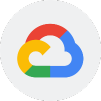
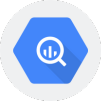
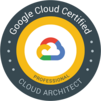
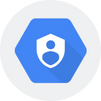

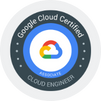
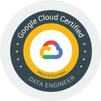
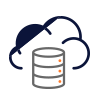

 Join our Live Instructor-Led online classes delivered by industry experts
Join our Live Instructor-Led online classes delivered by industry experts